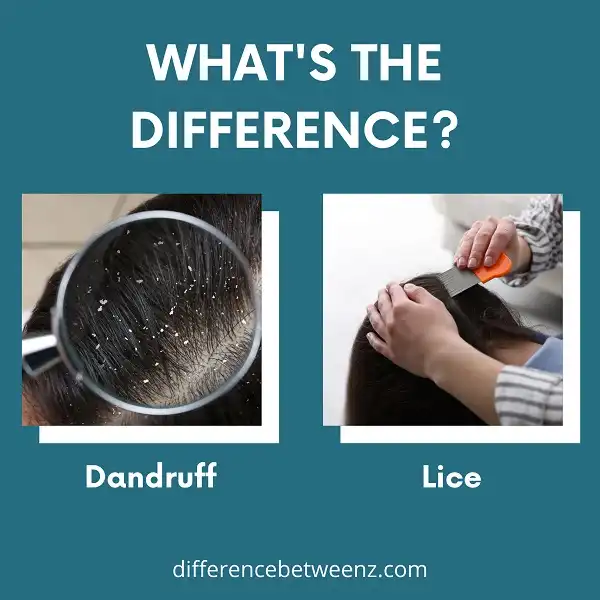Dandruff and lice are both scalp conditions that can cause itching and flaky skin. However, there are some key differences between the two. Dandruff is a condition caused by overactive oil glands, while lice are tiny parasites that attach to the hair shaft and feed on blood. Lice also lay eggs, which can lead to an infestation. Dandruff can be treated with medicated shampoos, while lice require more intensive treatment. If you think you might have either condition, it’s important to see a doctor for diagnosis and treatment.
What is Dandruff?
Dandruff is a condition of the scalp that causes flakes of skin to fall off. It is a very common condition, and it can affect people of all ages. The exact cause of dandruff is not known, but it is thought to be related to a combination of factors, including dry skin, oily skin, and a fungus called Malassezia. Dandruff is not contagious and it is not dangerous. However, it can be embarrassing and it can be difficult to get rid of. Dandruff can be treated with over-the-counter shampoos that contain anti-dandruff ingredients. If these shampoos do not work, a doctor may prescribe a medicated shampoo or cream. In most cases, dandruff can be controlled with regular cleansing and the use of dandruff-specific products.
What is Lice?
- Lice are small, wingless insects that live on the scalp and feed on human blood. Lice can be white, gray, or brown, and they range in size from 2 to 3 millimeters. There are three main types of lice: head lice, body lice, and pubic lice. Head lice are the most common type of lice, and they attach themselves to the hair shafts near the scalp. Body lice live in clothing and bedding, and they attach themselves to the body when feeding.
- Pubic lice live in pubic hair and attach themselves to the skin. Lice are usually spread through direct contact with an infected person or through sharing infested clothing or bedding. Lice can also be spread through contact with contaminated surfaces, such as combs, brushes, or towels. Lice eggs (nits) can also be transferred from one person to another. Lice eggs are small, oval-shaped eggs that are attached to hair shafts near the scalp.
- Lice eggs hatch about seven days after they are laid, and nymphs (young lice) begin to feed on blood immediately after hatching. Nymphs mature into adults about two weeks after hatching. Adults can live for up to 30 days on a single host. Lice cause itching and irritation of the skin. Lice infestations are not associated with poor hygiene, and they can occur in any individual regardless of age, gender, race, or socioeconomic status. Lice treatments include over-the-counter medications and prescription medications. Lice should be treated as soon as possible to prevent the spread of infestation.
Difference between Dandruff and Lice
Dandruff and lice are two very different things, though they can both cause itching and irritation. Dandruff is a condition of the scalp where dead skin cells accumulate and flake off. It’s generally not serious and can be treated with over-the-counter shampoos. Lice are tiny insects that live on the scalp and feed on blood. They lay eggs, which are called nits and can be very difficult to get rid of. Lice are spread through contact with an infected person or object, such as a brush or hat. If you think you have dandruff or lice, it’s best to see a doctor or dermatologist for diagnosis and treatment.
Conclusion
Although both dandruff and lice are pests that can be a nuisance, they are different in many ways. Dandruff is caused by dry skin or an overgrowth of yeast on the scalp, while lice are tiny parasites that live in hair and feed on blood. Lice eggs (nits) attach to strands of hair close to the scalp, while dandruff flakes can be found all over the head. Dandruff is treated with medicated shampoos, while lice removal requires special shampoo, conditioner, and combing treatments. If you think you may have either condition, it’s important to consult a doctor for proper diagnosis and treatment.


